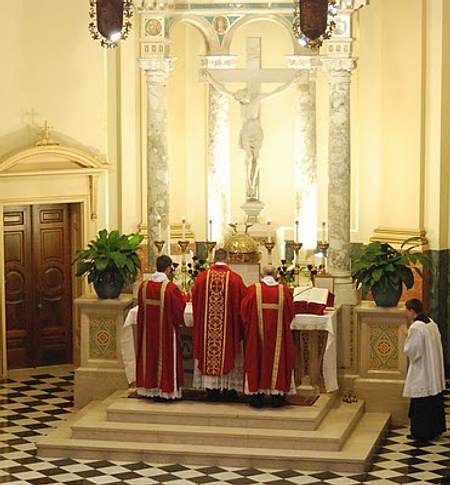
I starten av september ble det holdt en liturgisk konferanse i Colombo, Sri Lanka, med mange interessant foredrag. Alle foredragene ligger ute på nettsidene til erkebispedømmet Colombo (men sidene ser ut til å ha visse sikkerhetsproblemer), derfor er det blitt lettere å lese i alle fall ett av foredragene – av Martin Mosebach – siden det nå i sin helhet er lagt ut på NLM-bloggen.
Jeg har sett en del på Mosebachs foredrag – om den gamle messen som (nesten) var blitt borte, men nå er gjenfunnet – og tar med deler av det her, men noen egne pekere:
Om messens vesen – messen er ikke et menneskelig verk
Early Christians knew as a matter of course that the cult bequeathed to them by the Lord was far more than a repetition of the Last Supper. They knew that the Last Supper was itself only a sign of the real work of redemption that was to take effect in his anguished death on the Cross. That is why they clothed this cult in the most sublime and beautiful forms of prayer and sacrifice that mankind had developed in the thousands of years before the coming of the Redeemer. These forms had no author; they were not devised by wise men: they arose from the sensibilities of all people who desired to worship the Divinity.
Only one thing distinguished this new Christian sacrifice from its antecedents in all religions: in making present the sacrifice of Jesus, it was not so much the work of pious and religious men as the work of God himself. It was a work performed by God for the benefit of mankind. It was a work which men – even the most religious men – could not have done for themselves. They could come to it only by the grace of the Redeemer. This is a central axiom of Christian worship, without which it remains unintelligible: it is not a human work, and therefore must not be allowed to appear to be a human work. It must be seen to owe its origin not to the will of man, but to the will of God. For Catholics this should be beyond dispute. But we have to acknowledge that in many parts of the Catholic world, and particularly in the Catholic Church’s historical bedrock territory, this axiom is no longer taken for granted.
Messen er virkelig; den er ikke et symbol på noe viktigere some er usynlig
… For a Catholic this visibility is not some subordinate quality: it is not subordinated to some higher, invisible world. God himself took a human body and even bore his wounds with him into glory. Ever since the God-man saw with our eyes and heard with our ears, our senses (which are by nature so easily deceived) are fundamentally empowered to recognize truth. As a result of Christ’s Incarnation the material world is no longer the realm of illusion: now, matter can again be seen for what it is: God’s thoughts, expressed in terms of the material world.
This realization gave rise to the absolute seriousness with which the Church used to perform all the physical actions of the liturgy. Every gesture of the hand, every inclination of head or body, every genuflexion, every kiss given to sacred objects was performed seriously and deliberately. The candles, the vessels and the sacrificial gifts of bread and wine were handled with respect. The language in which the divine thoughts were expressed was regarded literally as an instance of revelation. Thus St. Basil the Great, one of the Eastern Fathers, expressly said that Holy Mass was just as much revelation as Holy Scripture.
Vatikankonsilet ville bare forsiktig justere messen
The Second Vatican Council expressly and emphatically repeated the traditional theology of the Mass; it solemnly recognized the sacred language and the sacred music (Gregorian chant, which hovers between West and East, not belonging exclusively to any one culture). The Council called only for a cautious revision of the liturgical books – the kind of revision that was usual every couple of hundred years or so, in order to prevent any misunderstandings creeping in. Let us remember what the Catholic liturgy had achieved up to this time. Beginning with Asia Minor it had conquered the Roman and Greek world. Ultimately it had triumphed in the pagan Empire, had witnessed the latter’s demise and had won over the pagan peoples of the North and East. It became the instrument of a missionary success that is unique in world history. …
Hvorfor kom de dramatiske forandringene etter konsilet?
I am somewhat inhibited when I come to give an account of the unique event that has taken place in the Church. Of course I can give plenty of sociological, political and historical reasons for this event, which in its effects can only be compared, perhaps, with the hundred years of the Iconoclastic controversy in Constantinople, though Iconoclasm affected only a small region within the vast compass of the universal Catholic Church. But I find none of these reasons convincing. I believe in the Church’s supernatural essence: this means that I cannot be satisfied with any natural explanations for the Church’s triumphs and disasters. Consequently I refuse to guess or surmise the reasons that moved many reformers of his time to surrender the Church’s inherited treasure, her very heart, and draw up a new liturgy. This new liturgy was constructed out of elements of the old liturgy but, as Pope Benedict has said, it tends in a direction that is in many ways opposed to that of the old.
Hva ble resultatet av den nye messen?
A severely simplified rite, with vernacular prayers that were theologically general and unchallenging in tone, would surely help to keep modern people within the Church. Even this notion should have made people ask questions; in the mission lands of Asia, for instance, with their advanced civilization, people had been accustomed to extraordinarily rich rites in difficult sacred languages for millennia. To withhold Catholic tradition from them was equivalent to an act of colonialist paternalism. In the Christian heartlands, however, the reform’s simplifications had devastating consequences. When, in spite of much resistance, the reform was pushed through in a last exercise of power on the part of the Roman central authorities, the faithful began to pull out of the churches. As someone wrily observed, «The reform of the Mass was intended to open the Church’s doors to those outside; what happened was that the people inside escaped and ran away!» The solemn, hieratic cult was abolished, and the attempt was made, so to speak, to run after the faithful with the sacraments. But they declined this offer. In whole areas of Europe all understanding of the sacraments disappeared. The entire development was baffling: now that every word – allegedly – could be understood, the whole eucharistic event had become somehow alien to people. The Church’s great work of making God present no longer made sense. Simultaneously, knowledge of the Catholic faith withered away. Today, in Europe, there are many Catholics who can hardly say an Our Father, let alone a Creed. Many have only the vaguest notion of the Church’s teaching.
Men mange av forandringene som kom etter 1970 var ikke med i rubrikkene for den nye messen
… many of the most offensive infringements committed against the law of Catholic tradition were in no way rooted in Pope Paul’s reform. They arose from the disobedience that proliferated everywhere in the West as a result of the structural collapse during the pontificate of this unfortunate pope. …. The Missal of. Paul VI, for instance, did not order the altars to be turned round – one of the most grievous acts against the tradition of prayer in the entire world. Pope Paul did not necessarily want to put an end to the tradition whereby the priest, together with the faithful, faces the Crucified Christ, the Christ who is to come again from the East; nor did he want to suppress the tradition according to which the priest addresses his prayers, together with the congregation, to Christ, present on the altar in the form of the transformed [transubstantiated] gifts. This reversal of the orientation of prayer did more harm in Europe and the United States than all the relativizing, demythologizing and humanizing theologians. It struck the simple believer immediately that the prayers were no longer addressed to God but to the congregation. Now, the purpose of prayer was to put the congregation in the right mood, the right frame of mind so that it could celebrate itself as the «People of God». Something similar happened when Holy Communion was given in the hand instead of on the tongue, as formerly. This change, also, was not foreseen in the Missal of Paul VI: it was enforced by some German bishops.
Jeg kommer snart med noen kommentarer til andre del av foredraget.



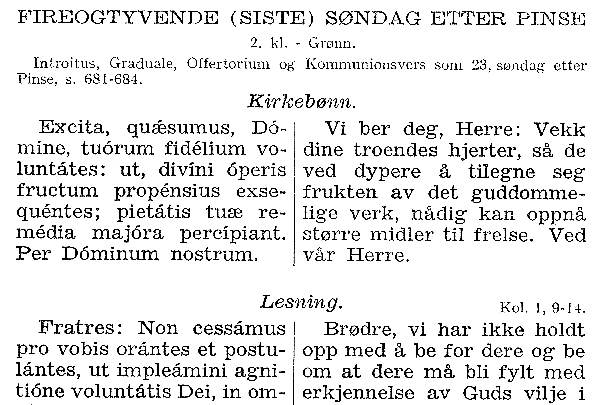
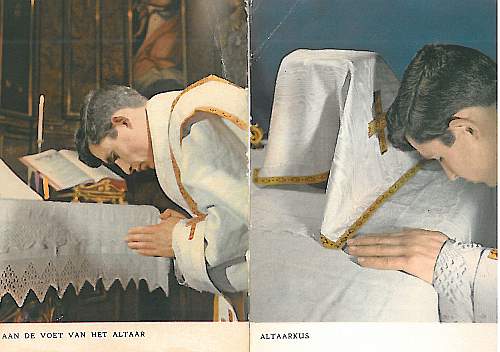



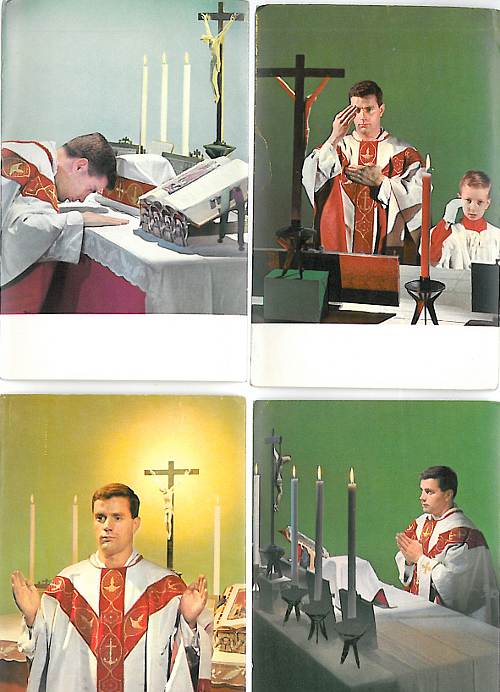
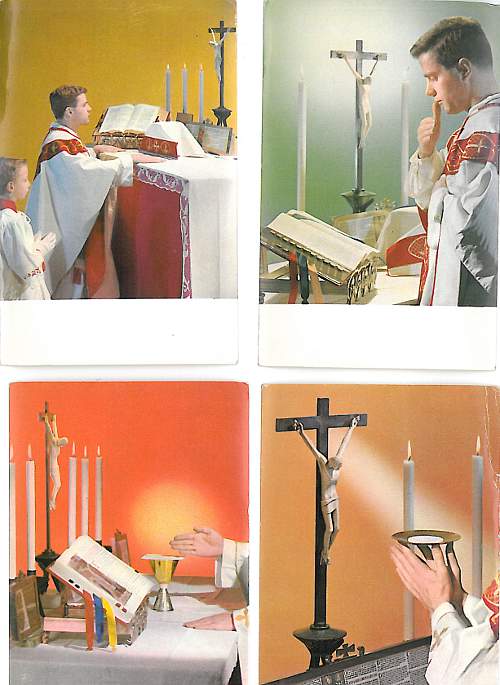
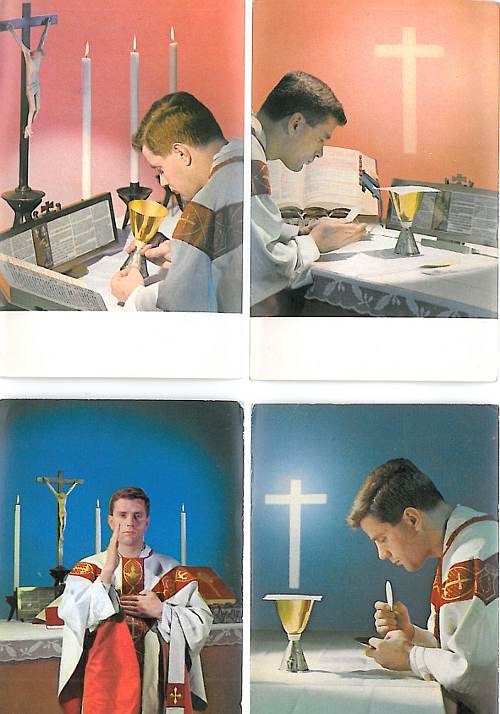

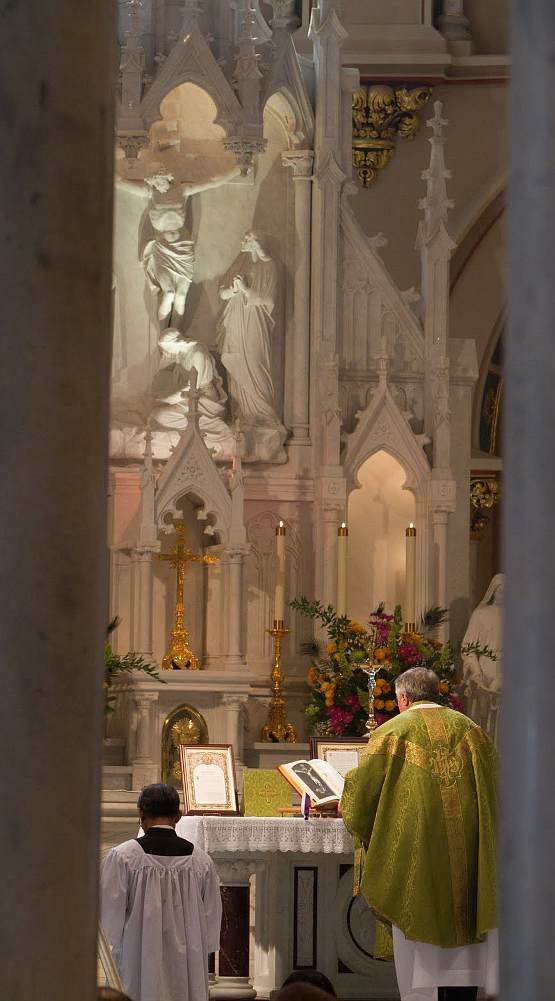
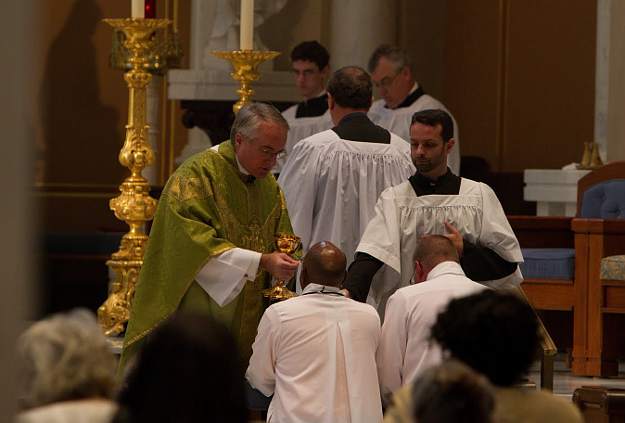
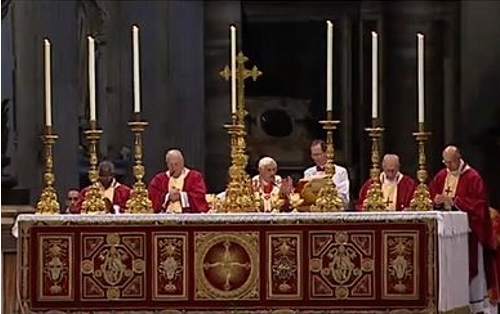 Jeg leste i dag
Jeg leste i dag  Fr Barthe has just launched a little bombshell called “the Mass the right way round”. … He believes he is supported by a mainstream, described in the Church as the reform of the reform. Explanations. …
Fr Barthe has just launched a little bombshell called “the Mass the right way round”. … He believes he is supported by a mainstream, described in the Church as the reform of the reform. Explanations. …